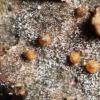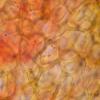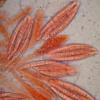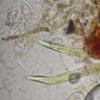
12-03-2014 17:04
 Hermine Lotz-Winter
Hermine Lotz-Winter
Hello,could anyone help me with this title:Rodrigu

12-03-2014 20:37
 Maren Kamke
Maren Kamke
Hi everybody,I got this find from a friend. Apothe

12-03-2014 20:26
Pavol PaloHello friends,may I ask you for help ? I would nee

12-03-2014 19:52
 Joop van der Lee
Joop van der Lee
Found on deer dung. Fruitbody: Diameter 300 um.As

11-03-2014 13:35
Garrido-Benavent IsaacDear all, This a tiny ascomycete developing just

11-03-2014 21:24
Hello,Has anybody a key of the genus Botrytis? I

11-03-2014 14:06
 Alessio Pierotti
Alessio Pierotti
Some friends of the Forum can help me with this ar

09-03-2014 22:38
 XAVIER BESOMBES
XAVIER BESOMBES
Bonjour à tout monde,J'interviens pour la premiè
I hope someone can help me with this one.
Ecology: On oak cupule
Macroscopic description:
Perithecia slightly pyriform, about 0.35 mm in diameter and 0.4 mm in height, with a brown-orange colour (no colour change in KOH). Seated superficial on the cupule surface without an obvious subiculum. The ostiole is distinctly cone-shaped and slightly darker in colour than the surrounding perithecial wall.
Microscopic description:
Perithecial wall consists of round to angular, somewhat thickwalled brown cells of usually 20-30 µm of diameter. At the perithecium base I observed very thickwalled hairlike Elements > 100 µm long and about 10 µm in diameter (see photo). Asci extremely thinwalled, nearly invisibly surrounding spores, spore-bearing part about 70 x 20 µm, no iodine reactions. Spores 50-55 x 5-6 µm, yellowish, 3-septate and often bent, with many oildrops.
Thanks for any help
Stefan
You should re-name the title of your message with the word "Calonectria" in order to be attractive for the specialists oh this genus.
Alain
Thanks a lot, Alain

Alain is right, it is a Calonectria, most likely C. pyrochroa which can occur on various substrates but is often present at this season on dead acorn cupules of Quercus in the litter. The greenish refractive hairs are those of the host, I had fallen into the trap too!
Cheers,
Jacques
I already had a weak suspicion that the hairs do not belong to the fungus. Thanks a lot for the identification.
Stefan



